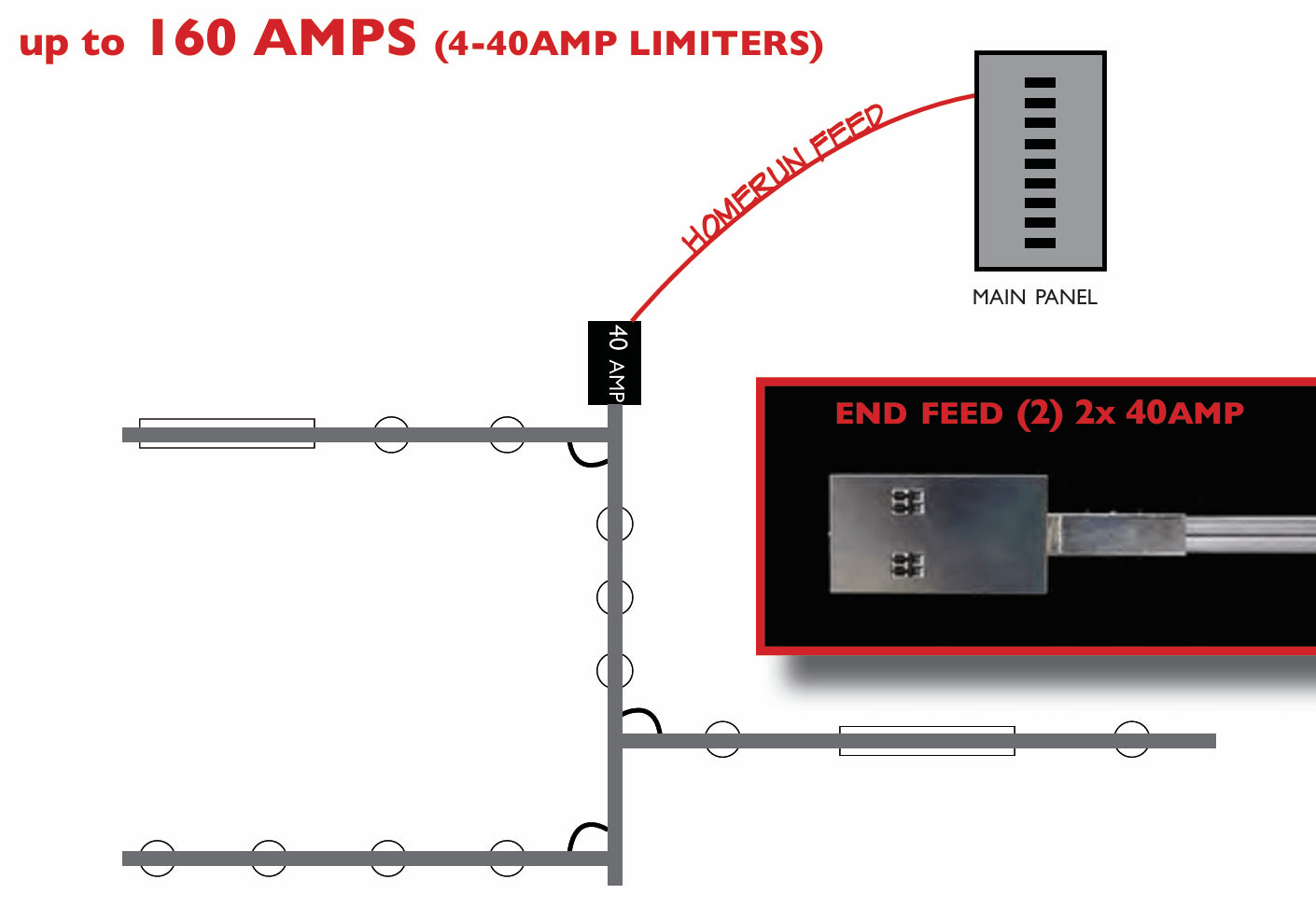Choosing the right voltage setup for your facility doesn’t have to be complicated. This guide explains single-phase vs. three-phase power in plain language and shows how track busway makes it easy to tap the voltages you need—without costly rewiring.

What’s the Difference Between Single-Phase and Three-Phase Power?
Single-phase uses one hot and a neutral—great for everyday loads like lighting and outlets. Three-phase uses three hots (120° apart) for smoother, higher-capacity power—ideal for big machines and HVAC.
Key takeaways
- 120V single-phase (line-to-neutral) supports most outlets, tooling, and lighting loads.
- 208V single-phase (line-to-line) powers equipment that requires 208V without a neutral.
- 208V three-phase provides balanced power for motors, HVAC, and heavier machinery.
- A standard 208Y/120V panel can supply all three from the same Track Busway run.
- Track Busway enables phase balancing across A/B/C for efficient load distribution.
Why single-phase is the workhorse
- Most facility loads are 120V, so you’ll have many more 120V drops than 3Ø drops.
- A three-phase busway can support more total 120V devices by spreading them across A/B/C phases.
Where three-phase still wins
- Smoother power for motors and big machinery.
- Higher capacity per circuit for large loads.
How Track Busway Distributes Common Voltages
Track Busway functions as an overhead power backbone, allowing 120V, 208V, and 208V three-phase circuits to be tapped anywhere along the run without predetermined window spacing or rewiring
120V single-phase (line-to-neutral)
- Perfect for most devices and receptacles.
- Balance drops across A/B/C phases for even loading.
208V single-phase (line-to-line)
- Useful for equipment rated 208V without a neutral.
208V three-phase
- Best for heavy machines and large HVAC compressors.
Aluminum vs. USA TrackBusway™️: Phase Selection.
Traditional aluminum track busway
- Tap-off units are often keyed to a specific phase or phase-pair.
- Changing from Phase A to Phase B may require a different tap unit.
USA TrackBusway™️ (flip-fit plug-ins)
- Field-select the phase (or phase-pair) by rotating the plug-in—no special keyed fittings.
- Faster installs, easier load balancing, fewer unique parts to stock.

| Traditional Aluminum Track Busway | USA TrackBusway™️ |
|---|---|
| Tap-off units are often keyed to a specific phase or phase-pair. | Field-select the phase (or phase-pair) by rotating the plug-in — no special keyed fittings. |
| Changing from Phase A to Phase B may require a different tap unit. | Faster installs, easier load balancing, fewer unique parts to stock. |
Double-Deck Option (6-Wire) for Added Capability



Need more than standard 4-wire (A/B/C + Neutral)? The double-deck configuration stacks two tracks to add conductors. That enables:
- Dedicated copper ground for sensitive equipment.
- Low-voltage control (e.g., 0–10V lighting dimming) within the same run.
- Scalable expansion without new conduit.
| Standard 4-Wire Busway | USA TrackBusway™️ Double-Deck (6-Wire) |
|---|---|
| Supports 3-Phase + neutral only. | Adds dedicated copper ground for sensitive equipment. |
| Limited to power conductors. | Allows low-voltage control wiring (e.g., 0–10V dimming) within the same run. |
| Expansion usually requires new conduit runs. | Scalable — stackable design supports future expansion without new conduit. |
120V Single-Phase Tap any single phase conductor(A, B, or C) and neutral. No keyed fittings required; select which phase to tap in-the-field. 208V Single-Phase Tap any two phase conductors(A-B, B-C, or C-A).
208V Three-Phase Tap all three phase conductors(A, B, C).

Applications and Use Cases
- Manufacturing: mix of 3Ø machines and 120V tools on one overhead run.
- Warehouses: easy adds/moves/changes as layouts evolve.
- Labs & R&D: clean ceilings, quick reconfiguration.
- Commercial & retail: lighting plus power anywhere along the run.
Summary: Picking the Right Voltage Mix
- Use 120V single-phase for most outlets and lighting.
- Use 208V single-phase where equipment requires it.
- Use 208V three-phase for heavy rotating loads.
- Choose USA TrackBusway™️ for field-selectable phases and rapid changes.
- Consider double-deck when you need dedicated ground or control wiring.
Next Steps
Have questions about voltages, phase balancing, or which tap-offs to choose? Contact us and we’ll help design the right layout for your facility. You can also browse our FAQ or see real-world examples on our Projects page.

